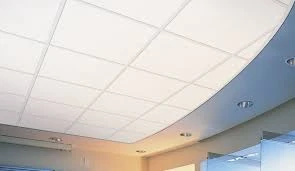- Afrikaans
- Albanian
- Amharic
- Arabic
- Armenian
- Azerbaijani
- Basque
- Belarusian
- Bengali
- Bosnian
- Bulgarian
- Catalan
- Cebuano
- Corsican
- Croatian
- Czech
- Danish
- Dutch
- English
- Esperanto
- Estonian
- French
- German
- Greek
- Hindi
- Indonesian
- irish
- Italian
- Japanese
- Korean
- Lao
- Malay
- Myanmar
- Norwegian
- Norwegian
- Polish
- Portuguese
- Romanian
- Russian
- Serbian
- Spanish
- Swedish
- Thai
- Turkish
- Ukrainian
- Uzbek
- Vietnamese
Nov. . 19, 2024 00:28 Back to list
Specifications for Mineral Fiber Ceiling Materials and Installation Techniques
Understanding Mineral Fiber Ceiling Specifications
Mineral fiber ceilings are a popular choice in commercial and residential construction, known for their acoustic properties, affordability, and thermal insulation. These ceilings, often referred to as acoustic tiles, are made from a composition that typically includes mineral fibers, a binding agent, and other additives. When specifying mineral fiber ceilings, it is essential to understand the various specifications that ensure the product meets the necessary performance standards for its intended application.
One of the primary specifications for mineral fiber ceilings relates to their sound absorption capabilities. The Noise Reduction Coefficient (NRC) is a crucial parameter that measures how effectively a ceiling tile can absorb sound. An NRC rating of 0.70 or above is generally recommended for spaces where controlling noise is essential, such as offices or schools. This rating means that approximately 70% of sound waves are absorbed by the ceiling, significantly reducing echo and enhancing acoustic comfort.
Another important specification is the fire resistance rating. Mineral fiber ceiling tiles are typically classified according to their performance in fire tests. The ASTM E84 standard is commonly used to assess the flame spread and smoke developed characteristics of building materials. A Class A rating means the material has a flame spread index of 0-25, which is ideal for commercial applications where fire safety is a priority.
mineral fiber ceiling specification

In addition to acoustic and fire performance, the durability of mineral fiber ceilings is also a key specification. These tiles should have resistance to sagging, especially in high humidity areas like kitchens and bathrooms. Many manufacturers offer tiles that are treated with moisture-resistant coatings, allowing them to maintain their appearance and performance in various environmental conditions.
Aesthetic considerations should also be taken into account when specifying mineral fiber ceilings. The tiles come in various textures, colors, and sizes, allowing architects and designers to select options that complement their overall design vision. Some products are available with a painted or laminated surface, enhancing their appeal and making them suitable for visible ceiling applications.
Sustainability is increasingly becoming a critical factor in the selection of building materials. When specifying mineral fiber ceilings, it can be beneficial to choose products that are made from recycled materials or are manufactured using sustainable practices. Many manufacturers provide Environmental Product Declarations (EPDs) that detail the environmental impact of their products.
In conclusion, specifying mineral fiber ceilings involves a careful consideration of various factors, including sound absorption, fire resistance, durability, aesthetics, and sustainability. By understanding these specifications, architects, builders, and design professionals can make informed decisions, ultimately resulting in spaces that are both functional and visually pleasing. Whether for an office, school, or retail environment, the right mineral fiber ceiling can make a significant difference in the performance and comfort of a space.
-
Transform Interiors with PVC Gypsum Ceiling: A Stylish, Durable, and Moisture-Resistant SolutionNewsMay.19,2025
-
The Smart Interior Upgrade: Discover the Durability and Versatility of Gypsum Ceiling Access Panel SolutionsNewsMay.19,2025
-
The Smart Choice for Interior Design: Discover the Value of PVC Gypsum Ceiling SolutionsNewsMay.19,2025
-
Mineral Fiber Ceiling Tiles: The Smart Blend of Performance and AestheticsNewsMay.19,2025
-
Mineral Fiber Ceiling Tiles: The Superior Choice Over Gypsum for Sound and Fire SafetyNewsMay.19,2025
-
Mineral Fiber Ceiling Tiles: Eco-Friendly Strength and Style for Every CeilingNewsMay.19,2025







